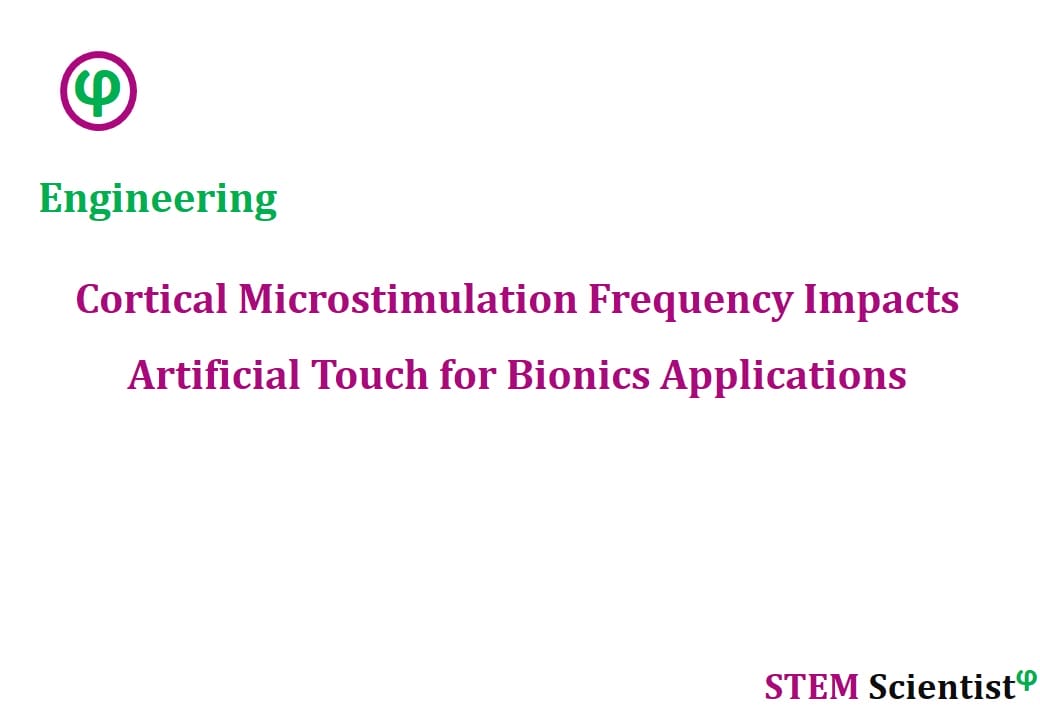
The following study was conducted by Scientists from Committee on Computational Neuroscience, Department of Organismal Biology and Anatomy, Grossman Institute for Neuroscience, Quantitative Biology, and Human Behavior, University of Chicago, Chicago, IL, USA. Study is published in Proceedings of the National Academy of Sciences Journal as detailed below.
Proceedings of the National Academy of Sciences (2020); 117(2): 1191-1200
The Frequency of Cortical Microstimulation Shapes Artificial Touch
Significance
Injecting small electrical currents into the somatosensory cortex evokes vivid tactile sensations that can be used to convey sensory feedback from brain-controlled bionic hands. To evoke intuitive touch percepts requires that we understand how these are shaped by stimulation parameters. Here, we characterize the ability of monkeys to discriminate microstimulation frequency over a wide range (from 10 to 400 Hz) and show that animals can discern changes in frequency up to about 200 Hz. On some electrodes, behavioral performance is mediated by frequency-dependent changes in sensory quality that are largely independent of sensation magnitude. On others, animals cannot distinguish changes in frequency from changes in amplitude. We discuss the implications of our findings for neural coding and artificial touch.
Abstract
Intracortical microstimulation (ICMS) of the somatosensory cortex evokes vivid tactile sensations and can be used to convey sensory feedback from brain-controlled bionic hands. Changes in ICMS frequency lead to changes in the resulting sensation, but the discriminability of frequency has only been investigated over a narrow range of low frequencies. Furthermore, the sensory correlates of changes in ICMS frequency remain poorly understood. Specifically, it remains to be elucidated whether changes in frequency only modulate sensation magnitude—as do changes in amplitude—or whether they also modulate the quality of the sensation. To fill these gaps, we trained monkeys to discriminate the frequency of ICMS pulse trains over a wide range of frequencies (from 10 to 400 Hz). ICMS amplitude also varied across stimuli to dissociate sensation magnitude from ICMS frequency and ensure that animals could not make frequency judgments based on magnitude. We found that animals could consistently discriminate ICMS frequency up to ∼200 Hz but that the sensory correlates of frequency were highly electrode dependent: On some electrodes, changes in frequency were perceptually distinguishable from changes in amplitude—seemingly giving rise to a change in sensory quality; on others, they were not. We discuss the implications of our findings for neural coding and for brain-controlled bionic hands.
Source:
Proceedings of the National Academy of Sciences
URL: https://www.pnas.org/content/117/2/1191
Citation:
Callier, T., N. W. Brantly, et al. (2020). “The frequency of cortical microstimulation shapes artificial touch.” Proceedings of the National Academy of Sciences 117(2): 1191-1200.


